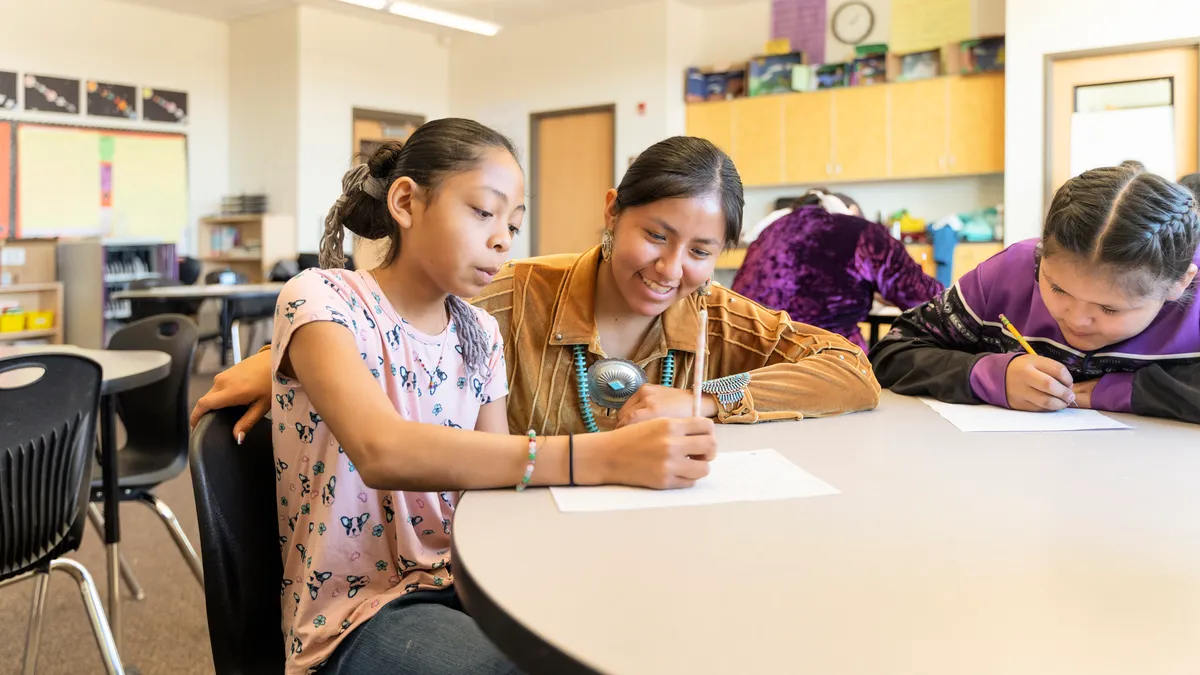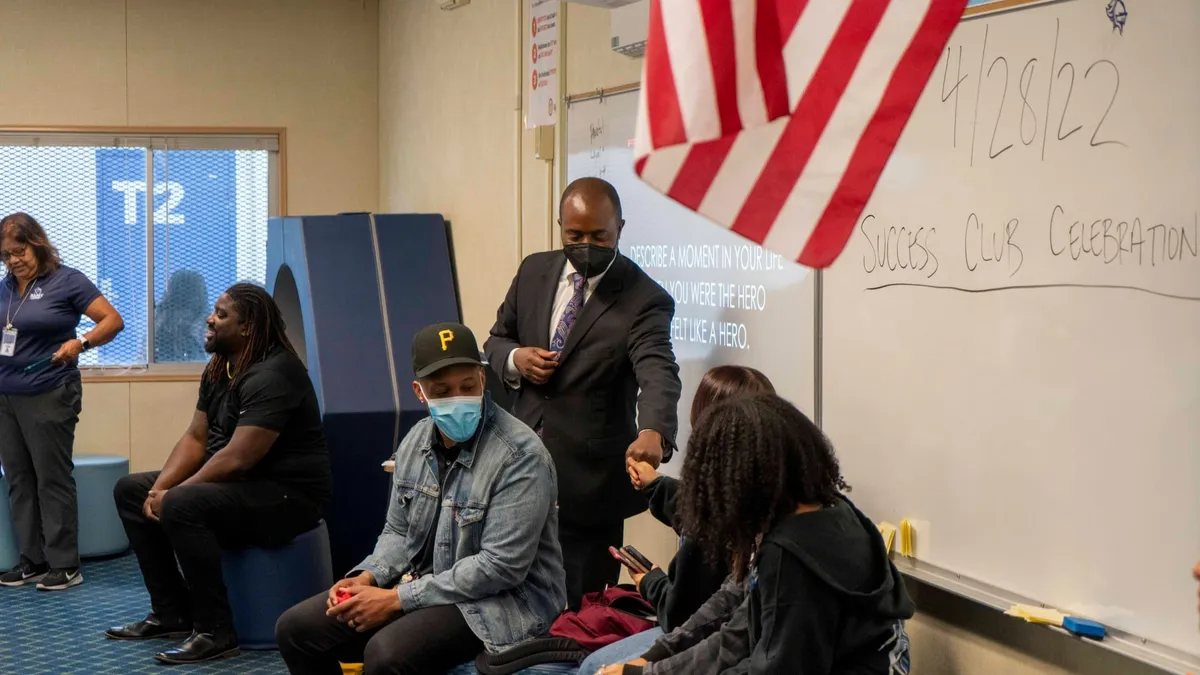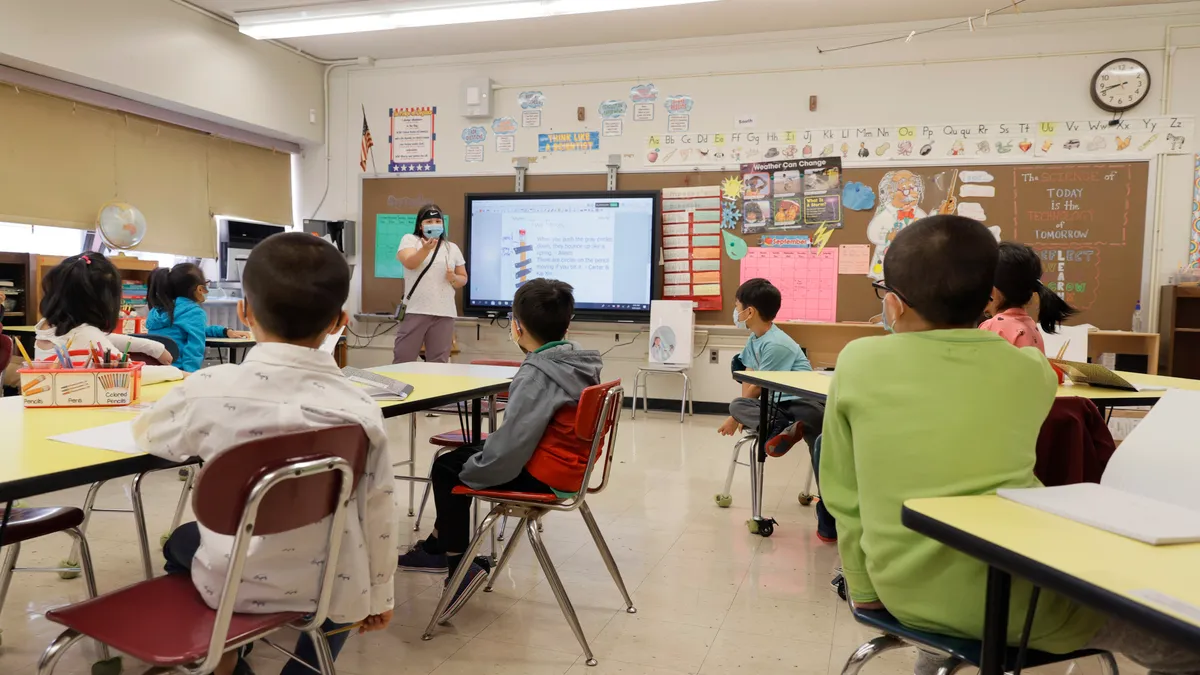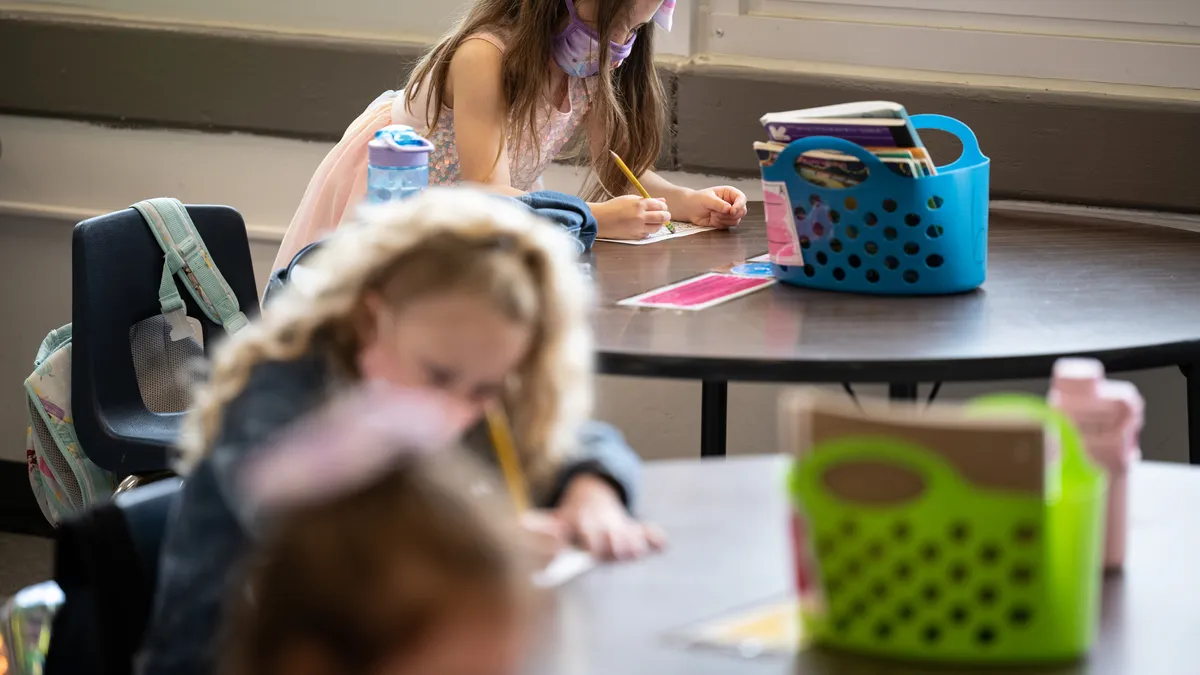Joe Sanfelippo is the superintendent of the Fall Creek School District in Fall Creek, Wisconsin.
“Is everything O.K.?”
That is the question I received from my food service director. It came after I had been in the kitchen with her staff. I was just there to check in, say hello, and hope to get everyone’s day started on the right foot. When she asked the question I was a little confused, but then I realized that the question had more to do with me than anything else.
With the rush of the weeks prior, I didn’t find myself in the kitchen checking in as much. The farther I got away from the daily interaction, the easier it was for people to think there was a problem that I was addressing when I showed up.
Trust in our organization is built with every interaction. Every time we get on the ground to tie the shoe of a student. Every time we meet a parent in the parking lot to tell them something great about their child. Every time we make a contact with a family member of one of our staff members to let them know how much they are valued.
Here are some of the things that we do to help build a culture where trust is the norm:
Be present and engaged
Cardinal Stritch University professor Nancy Blair told me that the greatest gift of service we can give to another human being is simply this: For the time you are with them, they are the center of your universe. Her comment spoke to me on a number of different levels.
First and foremost, we can’t be engaged if we are not present. When people don’t know what we do, they make up what we do. When they make up what we do, it’s not always what we want them to make up what we do. Visibility in the organization, both physically and virtually, is key to develop social capital with your group and help everyone see us as a true member of the team.
When we are absent from those spaces, the people in those spaces believe we don’t know what happens in those spaces. At that point, it becomes easier for them to be disconnected from leadership.
Celebrate publicly
We started doing a "Personal Day Giveaway" a few years ago. The process is relatively simple in that the week before the winter holiday break, we draw four names out of a hat, and our administrative team sets up a time with one of those four people to take over their job for the day. The staff member receives a personal day, and we assume their duties.
The process has been great, but we started amplifying that work last year, and it took it to a completely new level. When we celebrated the work of the staff member publicly, the community got to see all the great things they were doing. Utilizing social media to celebrate their work allowed the community to commend that individual for their role in the school.
Last year, we took over the custodial responsibilities of a staff member. We provided a quick video of the work we would be doing while they were gone, and then posted that publicly. I think a number of people saw the custodian’s cart going down the hallway on a daily basis, but I don’t think they always saw the person pushing the cart.
The most important piece is the person pushing the cart, and celebrating their work publicly has tremendous value.
Amplify connections
Not everyone had a great experience in school. Often, people outside the building tell stories of what happened when they were in school, and it becomes the perception of what is happening today. If they are still angry that they didn’t get a second chicken sandwich at lunch, were put against the wall at recess, received a grade they didn’t deserve, or didn’t get enough playing time on the team, they will tell that story to everyone who will listen.
When we tell the actual story of what is happening in our space, people are amazed. They get to be part of the journey. They get to celebrate the win, be in the classroom, and tell their extended families about the work happening at school. When we as leaders can amplify the work of our staff, they feel better about telling that story.
We make a tremendous amount of positive calls to parents, and those calls are also used to celebrate the work the teacher is doing with the students. We can amplify that message by making sure the parent knows how the teacher feels about the student. When we acknowledge the teacher’s work with kids to people outside the building, they will work harder for the people inside the building.
Add value, not just tasks
School leaders, let’s be honest. If you tell your staff you are going to a conference, they are going to be nervous. They are going to wonder what new model you are going to learn about and how that is going to impact an already full plate that they have during the day. New is not always better.
We need to be mindful of the things we are adding to staff. When we add tasks where the immediate value can’t be seen, we run the risk of people checking a completion box or not doing it at all. I understand that there are times we need to add or change the work, but when we are mindful that we want to provide value over tasks, more people will be willing to go on the journey.
In the end, the culture of your school is built with every interaction. Trust is not developed by a mission statement or a cool quote on the wall, but by our actions with everyone in that space. Being present and engaged with our school community, amplifying the great work that they do with people outside the building, and adding value to the work has helped our school create a culture where all learners have voice in the process.
My only hope for the people in this building is that they feel the way I feel when I talk about them. That’s all, because what they do is nothing short of amazing. We’re all in this thing together.



















